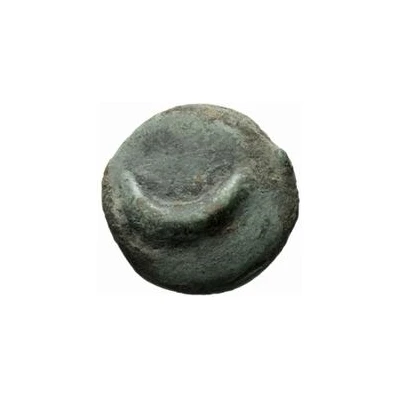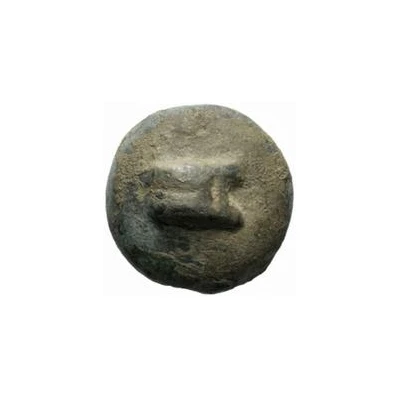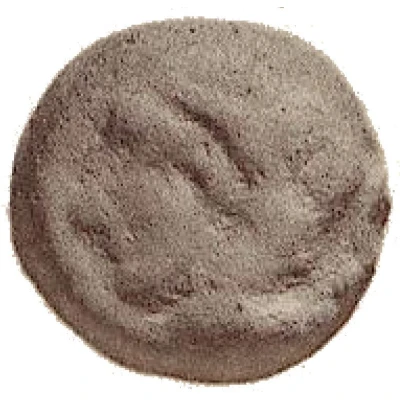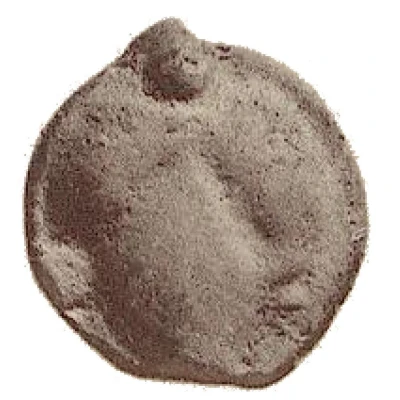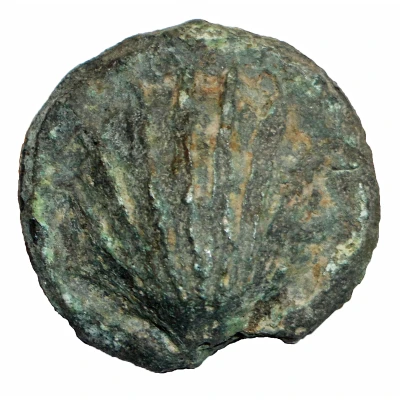
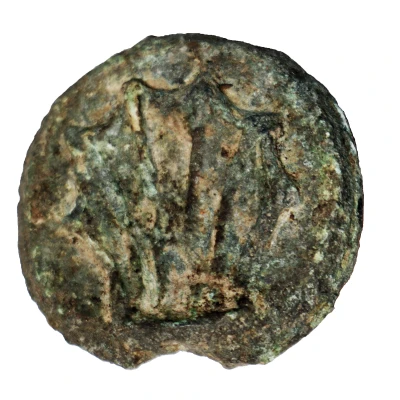

Sextans Scallop 269 BC - 265 BC
| Bronze | 36.89 g | 33 mm |
| Issuer | Uncertain city of Central Italy |
|---|---|
| Type | Standard circulation coin |
| Years | 269 BC - 265 BC |
| Value | Sextans (⅙) |
| Currency | As (circa 301-201 BC) |
| Composition | Bronze |
| Weight | 36.89 g |
| Diameter | 33 mm |
| Shape | Round (irregular) |
| Technique | Cast |
| Orientation | Variable alignment ↺ |
| Demonetized | Yes |
| Updated | 2024-10-10 |
| Numista | N#275420 |
|---|---|
| Rarity index | 97% |
Reverse
Scallop shell seen from inside
Comment
Roman cast sextans (Aes Grave). Coinage was based on the libral standard, where an 'As' referred to a coin and the weight. 1 As = 1 pound or 12 uncia (ounces). The weight standard changed around 265BC (just before the Punic Wars) so that 1 As = 10 uncia (the light libral standard). A sextans is 1/6th of an AsInteresting fact
The Sextans (Scallop) coin was used in ancient Rome as a form of currency, and its design featured a scallop shell on one side and a human head on the other. The scallop shell was a symbol of the Roman goddess Venus, who was associated with love, beauty, and fertility. The coin's design was meant to represent the connection between the goddess and the Roman people, and it was believed to bring good luck and prosperity to those who carried it.
